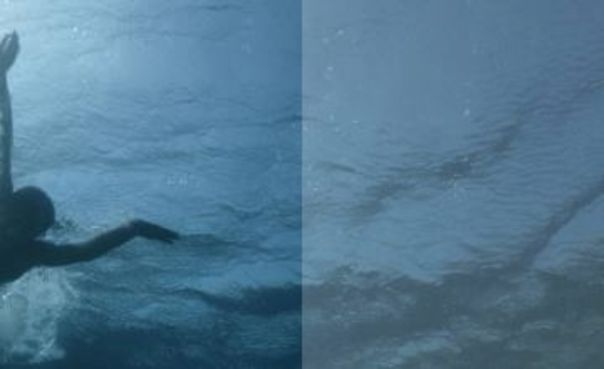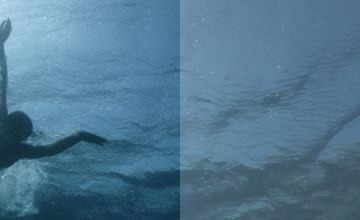Review: INTO THE BLUE / U PLAVETNILO
By Flavia Dima


Coming to Sarajevo Film Festival’s Short Film Competition after picking up the Special Jury Mention for Best Short Film in the Generation 14Plus section in Berlin earlier this year, Antoneta Alamat Kusijanović’s INTO THE BLUE / U PLAVETNILO (2017) takes viewers into the mind of a troubled teen struggling to enjoy a summer day’s swim with her friends, as everything around her (including her own identity) is in the midst of a huge shift. As the relationships around her are changing, so is her own position – be it of her own will or not.
The short follows the story of Julija, a teen girl visiting her small, seaside hometown for her summer holidays after having moved to the city with her freshly-divorced mother sometime during the past year. From the get-go, she is set up as a “troublemaker” – during a boat ride, her mother mentions a previous attempt at running away from home, and Julija’s response is to promptly dive into the waters below, shutting off any contact to the world above. The only thing that seems to make her happy is her reunion with her best friend Ana, but the protagonist’s affection is hinted to be a little bit more than just platonic love. When young hottie Pjotr enters the scene as Ana’s possible love interest, Julija’s nerves and desire for attention flare up and get the better of her, as an innocent afternoon at the seaside turns into an unpredictable (and dangerous) contest for affection.
Some aspects of the story seem to be intentionally ambiguous due to the sparse details that come across in the characters’ dialogues – such as the degree to which Julija’s feelings for Ana have an erotic drive, or the extent to which her father was abusive towards his family. But actress Gracija Filipović’s rich performance as the film’s protagonist conveys a very broad range of emotions, such as sensitivity, angst, arrogance, and boredom. Although the causes of these feelings may be unknown to the public, Filipović’s delivery makes them so clear that they can almost be felt. The mind of a teenager may be hard to understand (especially for themselves), but here we get a glimpse into the heart of a girl who is deeply and powerfully longing for affection – and every single time we see her mis-managing her emotions, we get to piece together another bit from a heart that has been broken by parental abuse, social taboos, and egoism.
Being shot by the seaside, INTO THE BLUE makes full use of water as both a visual metaphor and literary device. Aided by the superb cinematography of Marko Brdar, known for THE HIGH SUN / ZVIZDAN (2015), whose command of the camera makes it seem as if, at times, we are glancing at the film through the eyes of its shy protagonists. The final confrontation between Julija and Pjotr shows them dangerously throwing themselves off a steep cliff into the waters below. Recurrent images of Julija underwater convey the sense of her innate escapism, of the way she just shuts other people off when they do not do as she pleases – a facet of her personality which Ana painfully points out at one moment. One must also see water as a symbol for fluidity and sexuality, as the teens’ identities seem to have yet become fully developed, especially when it comes to more intimate issues. Every time Julija dives into the waters, the image of her body floating by itself in a seemingly endless ocean may be in fact a glimpse of her profound sense of loneliness and pain. Alternatively, it may also be seen as a place of safety and retreat – as her sense of rejection increases and her attempts to reconcile do not come across well, the girl dives deeper and deeper into the wombs of the waters, but ultimately ends up hurting herself and those around her – a cautionary tale for all those who prefer to shut off the outside world.

